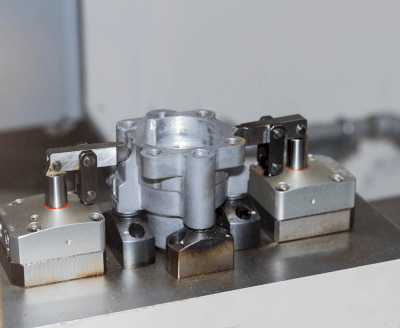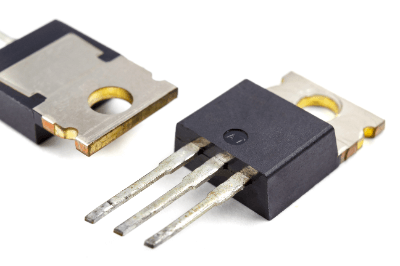What Is a Fixed Resistor?

A fixed resistor is one of the basic electronic components that prevents electricity from flowing.
It regulates the amount of current flowing in a circuit, divides (voltage divider) the voltage, and sets the time constant required for circuit operation. Fixed resistors are basic elements that play a variety of roles in a circuit.
A fixed resistor is a resistor whose resistance value cannot be changed, while variable resistor can be freely changed and semi-fixed resistors whose resistance value can be adjusted.
Usage of Fixed Resistors
The basic use of fixed resistors is to control the current flowing in a circuit. If there were no resistors in a circuit and all components were directly connected, unlimited current would flow through the circuit, and as a result, circuit components would burnout due to the flowing current.
In avoiding such a situation, resistors play a role in regulating the appropriate current in the circuit. In addition, fixed resistors can be combined to form various other circuits, such as a voltage divider circuit to obtain a desired voltage.
Principle of Fixed Resistors
The unit of resistance value to express the magnitude of resistance is expressed in ohms (Ω). This resistance is defined as 1Ω when the current flowing when a voltage of 1V is applied is 1A. Materials are classified into conductors, semiconductors, and insulators. Conductors are materials that conduct current well, such as iron, which has a very low resistance component; insulators are materials that conduct little current, such as plastics; and semiconductors are materials in between these three.
Resistors are materials with relatively high resistance values among conductors, such as carbon film resistors using carbon as a resistive element and metal film resistors using thin metal. Fixed Resistor has a fixed resistance value, but in circuit design, a variety of resistance values are required. On the other hand, considering productivity, it is necessary to consolidate them into several types.
Therefore, JIS and ISO have set a numerical value to consolidate and standardize resistance values. This is called the E series, and there are several types, the most representative of which are the E6 series, E12 series, E24 series, and E48 series.
The E6 series is specified based on six different values: 1.0, 1.5, 2.2, 3.3, 4.7, and 6.8. The E12 series/E24 series/E48 series specify resistance values in detail using 12, 24, or 48 different values. The E12 series, E24 series, and E48 series use 12, 24, or 48 different values to define resistance values in detail.
Types of Fixed Resistors
Fixed Resistors can be roughly classified by shape and material.
1. Classification by Shape
Fixed Resistors can be classified by shape into two types: leaded type and surface mount (chip) type.
Lead Type
This type of resistor has a lead wire (metal wire). They are designed to be inserted into a hole in a board and soldered, and were once the main type of resistors.
Surface Mount Type
This type of resistor is mounted directly on the board surface. Most of the resistors currently used in circuit boards of electronic devices are of this type, and nearly 90% of them are chip resistors in the shape of a small rectangular plate. In addition, cylindrical resistors called MELF type are also used, although only a few of them are used.
2. Classification by Resistive Element Material
Resistors can be classified into three main types according to their materials: carbon, metal, and metal-glaze.
Carbon Type
Resistors can be further classified into carbon film resistors (carbon resistors) and solid resistors. Carbon film resistors are the most commonly used low-power resistors because they are very inexpensive and can be used in a variety of cases. In most cases, the term “resistor” refers to carbon film resistors, which have an error margin of ±5%. Therefore, they are not suitable for applications that require high precision.
Metallic Type
Resistors are further divided into metal film resistors and metal oxide film resistors. Metal film resistors are resistors that use metallic materials such as nickel-chromium alloys for the film portion. Compared to carbon film resistors, metal film resistors are characterized by higher resistance accuracy and better temperature characteristics, but are more expensive.
Similarly, metal oxide film resistors use metal oxide, such as tin oxide, for the film portion. They are used for medium-power applications because of their high heat resistance.
Metal Glaze
Metal oxide or metal and glass are mixed and sintered at high temperature on an alumina substrate or similar material. It is extremely resistant to corrosion and has outstanding stability, with almost no degradation over time.
Other Information on Fixed Resistors
Lead Type Resistors
Lead type resistors are generally marked with four or five colors to indicate their resistance and tolerance. The colors correspond to numbers, e.g., 1 for brown, 2 for red, 3 for orange, and so on. T
In the Case of 4-Color Lines
The first number, second number, multiplier, and tolerance are in order from the first to the fourth line. For example, if the wire is “red-black-red-gold,” according to the color code, red is 2, black is 0, red indicating the multiplier is 10 squared, and gold represents the error ±5%. Thus, 2.0 kΩ ±5%.
In the Case of 5-Color Wire
The first number, second number, third number, multiplier, and tolerance are in order from the first to the fifth wire. If the color of the wire is “brown-green-black-black-brown,” according to the color code, brown is 1, green is 5, black is 0, black indicating the multiplier is 10 to the 0th power, so x1, and brown indicating the tolerance is ±1% error. Thus, 150Ω ±1%.



